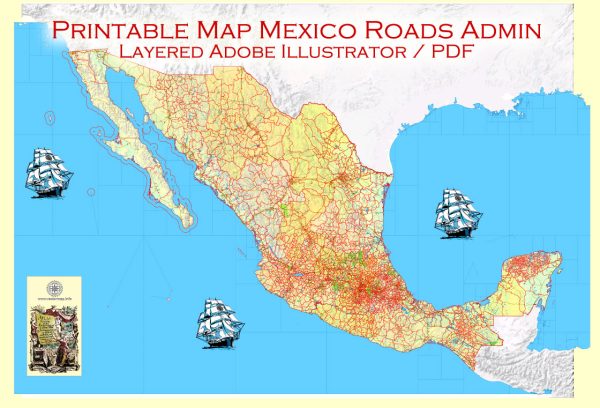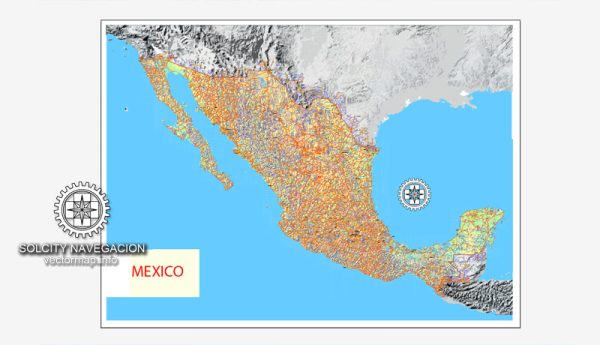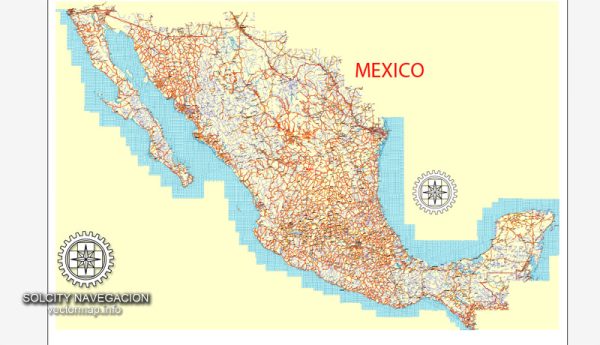Mexico has a rich and complex history that spans thousands of years. Here’s a brief overview of its history:
- Pre-Columbian Era: Mexico’s history dates back to ancient civilizations, including the Olmec, Maya, and Aztec. These cultures developed sophisticated societies with advanced agriculture, architecture, and mathematics. The Aztecs, in particular, established the city of Tenochtitlan, now the site of Mexico City.
- Spanish Conquest: In 1519, Spanish explorer Hernán Cortés arrived in Mexico and, with the help of indigenous allies, conquered the Aztec Empire. This marked the beginning of Spanish colonial rule, which lasted for nearly three centuries.
- Colonial Period: Mexico was part of the Spanish Viceroyalty of New Spain and was a significant source of wealth for the Spanish Empire due to its silver mines and agricultural production. During this time, Catholicism was introduced, and the indigenous cultures merged with Spanish traditions, giving rise to a unique Mestizo culture.
- War of Independence: In the early 19th century, Mexicans began to push for independence from Spanish rule. The movement culminated in the Mexican War of Independence, which began in 1810 and was led by figures like Miguel Hidalgo and José María Morelos. Mexico finally gained its independence in 1821.
- Early Republic: The newly independent Mexico struggled with political instability and territorial changes. It briefly became an empire under Emperor Agustín de Iturbide before transitioning into a republic. The United States annexed Texas in 1845, leading to the Mexican-American War (1846-1848), which resulted in Mexico losing a significant portion of its territory.
- French Intervention and Empire: In the 1860s, Mexico faced a French intervention led by Napoleon III. This led to the establishment of the Second Mexican Empire under Emperor Maximilian I. However, the Mexican people, led by figures like Benito Juárez, eventually overthrew the empire and restored the republic in 1867.
- Porfiriato and Mexican Revolution: The late 19th and early 20th centuries were marked by the long-lasting rule of Porfirio Díaz, which was characterized by authoritarianism and economic growth. The dissatisfaction with Díaz’s regime eventually led to the Mexican Revolution in 1910. This revolution sought to address issues of land reform, social justice, and labor rights.
- Post-Revolution and Modern Mexico: The Mexican Revolution resulted in the adoption of a new constitution in 1917 and the establishment of the Institutional Revolutionary Party (PRI), which dominated Mexican politics for most of the 20th century. Mexico underwent significant social and political changes, including land reforms and the nationalization of key industries.
- Contemporary Mexico: In the late 20th century, Mexico experienced economic challenges, but it has also become a major player in the global economy. It transitioned to a multi-party democracy in the late 20th century, with the PRI losing its long-held grip on power. Issues like drug cartels, corruption, and inequality remain challenges for the country.
Mexico’s history is marked by a rich cultural heritage, a legacy of indigenous civilizations, Spanish colonial influence, and a strong sense of national identity. It has played a significant role in shaping the history of the Americas and continues to be a dynamic and diverse nation in the modern era.




 Author: Kirill Shrayber, Ph.D.
Author: Kirill Shrayber, Ph.D.